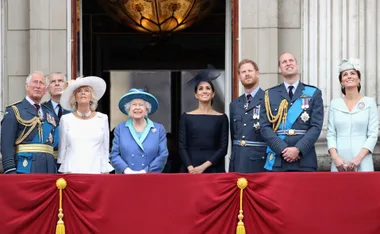Catherine Smith was terrorised by her husband in one of the worst cases of domestic violence ever recorded in Australia. Yet while the blows were directed at her, it was her children who suffered the most.
It’s the night that Catherine Smith fears the most. Not for the darkness, but for the nightmares that lurk in it.
And of all the nightmares — and there have been many since she escaped from her dominating and violent husband — there is one that terrifies her most of all.
Related: Wife beater given bravery award
“I’m clutching at my neck, clawing at it with my fingers,” recalls Catherine, now 62.
“He’d sliced open my throat with a rusty razor and I’m trying to hold the wound together. It was so vivid. When I woke, I was standing on the brass railing at the head of bed, trying to climb the wall.”
Catherine doesn’t sleep much these days. “I’m too afraid to sleep because of nightmares like that,” she says.
“The nightmares started after I escaped from him. When I was with him, I never dreamed. When I was with him, I was living a nightmare every day.”
Catherine Smith is a survivor. She endured more than 20 years of abuse and violence — physical, emotional and psychological — at the hands of a brutal man.
Kevin John Smith waged a cold, calculated campaign of physical intimidation and psychological warfare against his own family, time and again using his children to emotionally blackmail Catherine into returning to a noxious relationship.
During two decades of living hell, Catherine was strangled, beaten, tortured with a cattle prod, raped and shot at in a reign of perpetual terror described by some as one of the worst cases of domestic violence ever recorded in this country.
Even after she escaped in 1997, Catherine’s nightmare continued as her obsessed husband sent private detectives to track her down and relentlessly harassed their children to discover where she was.
He even kidnapped his adult son and his partner, held them both at gunpoint and forced them to call Catherine.
Driven by fear and desperation, she eventually bought a gun of her own and confronted him.
During an ensuing struggle, Kevin suffered a gunshot wound to the stomach. Police charged Catherine with attempted murder, but a jury acquitted her after just 25 minutes, ruling lawful self-defence.
In a final ironic twist, police charged Kevin for his many crimes against Catherine and he is now serving a 17-year prison sentence.
Related: Has Australia gone soft on domestic violence?
Now, Catherine, a mother of six, is waging a campaign against domestic violence and, in early March, addressed the United Nations in an attempt to draw attention to what she believes is a national crisis and a dark stain on the Australian psyche.
“The system failed me and I will never forgive or forget that,” says Catherine. “The system failed my children, too. They had no protection — none. And it’s the children who suffer most because of the horror they see and the abuse they hear.
“The children suffer most. We have to change people’s perception, make them see domestic violence for what it truly is, a crime of the very worst kind.”
Read more of this story in the April issue of The Australian Women’s Weekly.
Your say: Have you been a victim of domestic violence? Let us know below.

Video: Living with domestic violence






































.jpg?resize=380%2C285)
.png?resize=380%2C285)










































